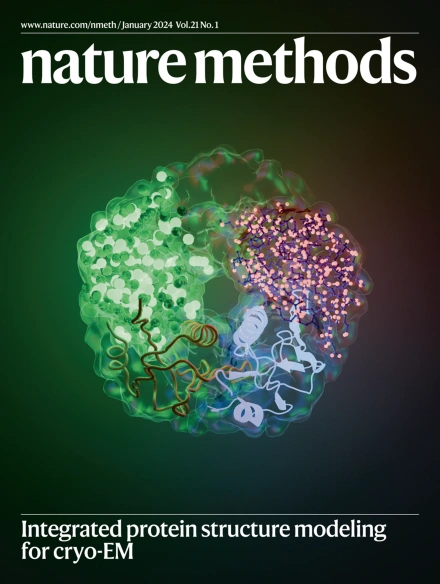振动纤维光度法:无标签和无报告的小鼠脑深部微创拉曼光谱。
IF 36.1
1区 生物学
Q1 BIOCHEMICAL RESEARCH METHODS
引用次数: 0
摘要
由于基因编码分子报告器的快速发展,监测神经活动的光学方法正在改变神经科学。然而,该领域仍然需要强大的无标签技术来监测伴随大脑发育、衰老或疾病的多方面生物分子变化。在这里,我们开发了振动纤维光度法,作为一种低侵入性方法,通过自发拉曼光谱对小鼠大脑任意深层区域的生物分子含量进行无标记监测。使用尖端细至1µm的锥形纤维探针,我们阐明了小鼠大脑的细胞结构,监测创伤性脑损伤引起的分子改变,并高精度地检测脑转移标志物。我们认为,我们的方法引入了一种深度学习算法来抑制探针背景,作为现有神经功能光学询问工具的一个有希望的补充,可以应用于大脑和其他器官的基础和临床前研究。本文章由计算机程序翻译,如有差异,请以英文原文为准。

Vibrational fiber photometry: label-free and reporter-free minimally invasive Raman spectroscopy deep in the mouse brain
Optical approaches to monitor neural activity are transforming neuroscience, owing to a fast-evolving palette of genetically encoded molecular reporters. However, the field still requires robust and label-free technologies to monitor the multifaceted biomolecular changes accompanying brain development, aging or disease. Here, we have developed vibrational fiber photometry as a low-invasive method for label-free monitoring of the biomolecular content of arbitrarily deep regions of the mouse brain in vivo through spontaneous Raman spectroscopy. Using a tapered fiber probe as thin as 1 µm at its tip, we elucidate the cytoarchitecture of the mouse brain, monitor molecular alterations caused by traumatic brain injury, as well as detect markers of brain metastasis with high accuracy. We view our approach, which introduces a deep learning algorithm to suppress probe background, as a promising complement to the existing palette of tools for the optical interrogation of neural function, with application to fundamental and preclinical investigations of the brain and other organs. Vibrational fiber photometry enables Raman spectroscopy in the mouse brain with low impact, owing to the use of tapered fibers.
求助全文
通过发布文献求助,成功后即可免费获取论文全文。
去求助
来源期刊

Nature Methods
生物-生化研究方法
CiteScore
58.70
自引率
1.70%
发文量
326
审稿时长
1 months
期刊介绍:
Nature Methods is a monthly journal that focuses on publishing innovative methods and substantial enhancements to fundamental life sciences research techniques. Geared towards a diverse, interdisciplinary readership of researchers in academia and industry engaged in laboratory work, the journal offers new tools for research and emphasizes the immediate practical significance of the featured work. It publishes primary research papers and reviews recent technical and methodological advancements, with a particular interest in primary methods papers relevant to the biological and biomedical sciences. This includes methods rooted in chemistry with practical applications for studying biological problems.
 求助内容:
求助内容: 应助结果提醒方式:
应助结果提醒方式:


